In a way, its rise was its fall. The quarry supplied grindstone used for paving roads, including those in Hartford; around a century later, the trend shifted toward cheaper paving materials sourced elsewhere. A couple dozen homes and businesses of Quarryville were supplanted by routes 6 and 44. One building survived modernization.
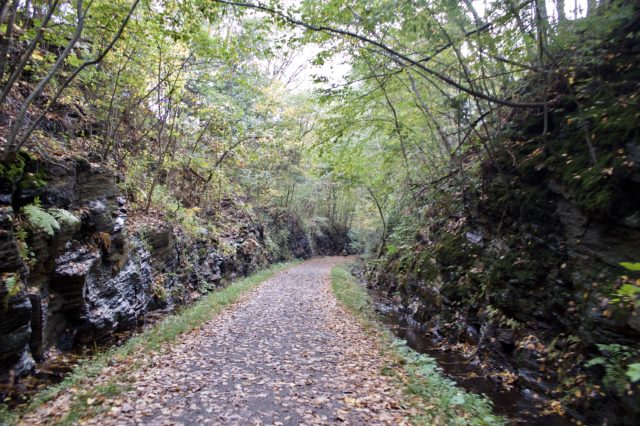
Before this was merely a fork in the road — or as the Courant called it in 1951, “a modern non-stop intersection for the smooth flowing of traffic in and out of eastern Connecticut” — it was a thriving industrial site accessed by the Hartford, Providence & Fishkill Railroad.
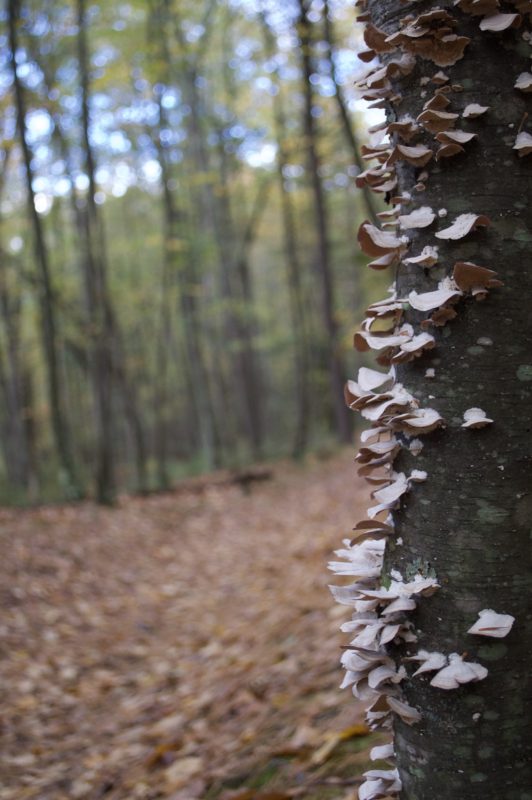
Quarrying or making way for the railroad — accounts vary — deepened the signature notch, and those working to extract stone in Notch Hollow were paid well. According to historian Hans DePold, the taverns of Quarryville “were places to drink and, seemingly, to make pacts with the devil. These were the kinds of taverns that sparked the Temperance movement.”
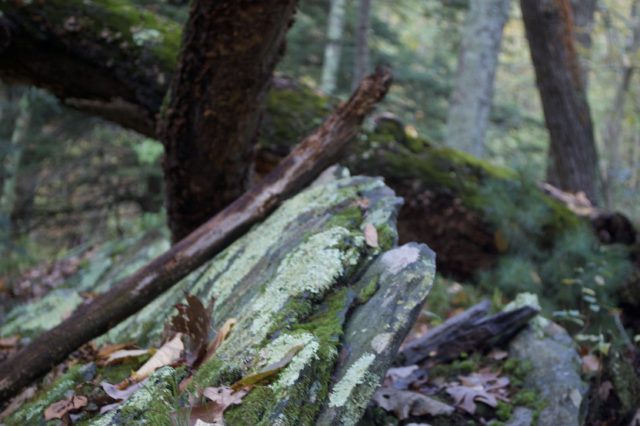
Across town on the Andover line, Bolton hosted the first camp meeting in New England. Lorenzo Dow, often described as an eccentric evangelist, did the preaching. These roving, outdoor religious festivals sprang up elsewhere in Connecticut later.
As it was put in a 1948 Courant article, “[i]t was a time when rum and religion struggled for supremacy in men who worked and played hard.”
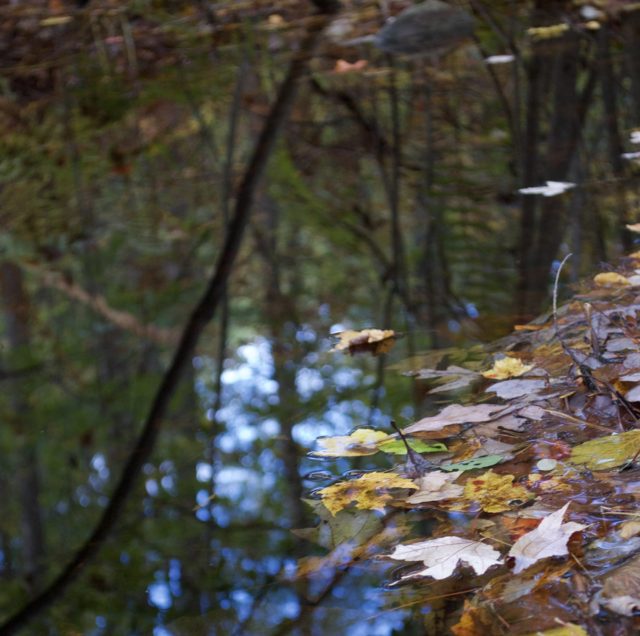
When the boom ended and the rail dismantled for scrap, there was opportunity for change.
The abandoned railroad, like many elsewhere, has been converted into a recreational path. Gently meandering through dripping rock ledges in the eastern Connecticut woods, the Hop River Trail offers quiet. There is no see-and-be-seen scene, but walkers, packs of cross-country runners, and the occasional cyclist with dog in tow populates the 20-something-mile long trail that spans from Manchester to Columbia. In season, Pink Lady’s Slippers can be viewed in clusters from around the edge of Vernon’s Valley Falls Park, becoming more sporadic the closer one gets to the covered bridge in Andover. Tannin-stained Railroad Brook runs north, paralleling the path.
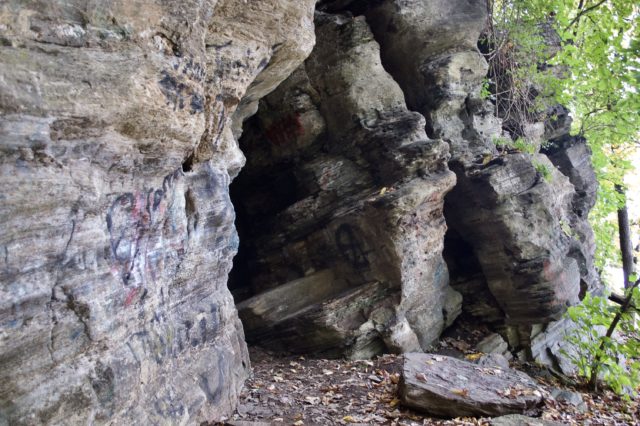
A cave is accessible five-minutes from the trail, within view of the pavement cluster below. The details of the cave’s legend vary, but all versions involve an early interracial marriage, a murder, and a mysterious escape/disappearance of either the wife, husband, or both. It’s a place where violence interrupted romance. Where talentless graffiti mixes with bad and offensive spray painted messages.
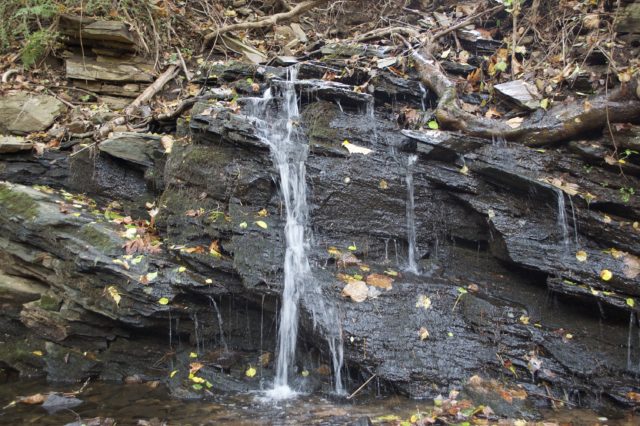
Between Hartford and Providence. Whatever you call the space on the edge of the Eastern Uplands or Hartford Mountains or Box Mountain or Bronson Hill, it’s easy to miss if zooming by in a car.
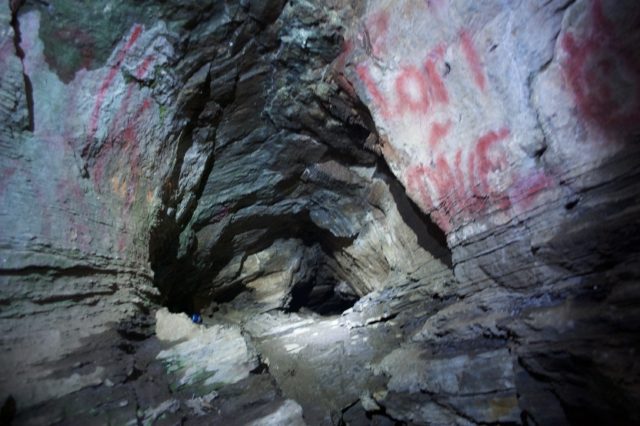
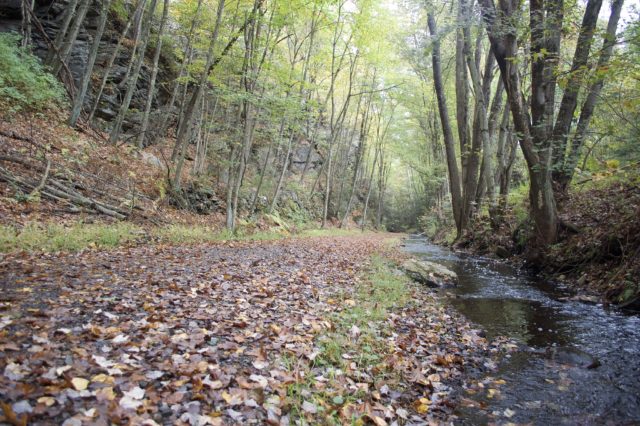
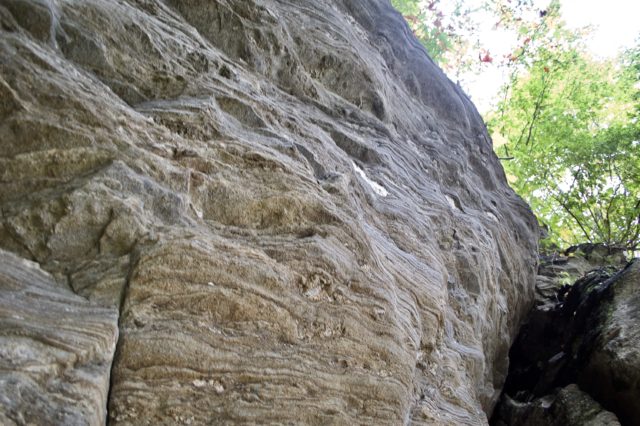
The Wild West ghost towns get all the glory, yet Connecticut is speckled with deserted villages. Our climate might tear through the evidence more quickly, but these are always in the background, whether the factories have been converted to lofts, the rails to trails, or if the structures have been left to be reclaimed by nature. Even when there is nothing left, there is the sense that something had been, even when the names are not known. Hop River, Factory Hollow, and Donkeyville. What gets lost when we move too fast to look?
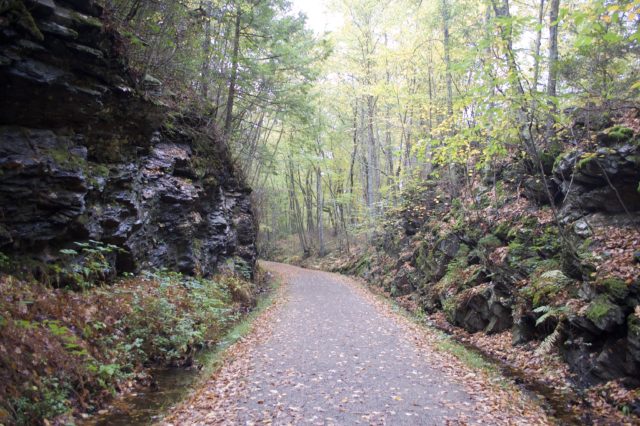
How to access
(from the west) The Charter Oak Greenway almost will get you to Bolton Notch State Park and the Hop River Trail. Where the path is blocked by construction signs, take Camp Meeting Road until you see a way back onto the path. There is an unimproved parking lot near the old Manchester Drive-In and a path either continues to the main Bolton Notch State Park lot or into the woods through Freja Park. Bikes are not allowed on the blue path (Shenipsit Trail), but there are other trails, and basically, just don’t trash the place. Freja Park connects to the Hop River State Park Trail.
(from the south or north, on foot) Follow the Shenipsit Trail
(from the north) Get on the Vernon Rails-to-Trails and ride or walk until.
Notch Hollow & Quarryville & Bolton Notch & Saqumsketuck & Sagumumpsketuck & Hop River Trail
In a way, its rise was its fall. The quarry supplied grindstone used for paving roads, including those in Hartford; around a century later, the trend shifted toward cheaper paving materials sourced elsewhere. A couple dozen homes and businesses of Quarryville were supplanted by routes 6 and 44. One building survived modernization.
Before this was merely a fork in the road — or as the Courant called it in 1951, “a modern non-stop intersection for the smooth flowing of traffic in and out of eastern Connecticut” — it was a thriving industrial site accessed by the Hartford, Providence & Fishkill Railroad.
Quarrying or making way for the railroad — accounts vary — deepened the signature notch, and those working to extract stone in Notch Hollow were paid well. According to historian Hans DePold, the taverns of Quarryville “were places to drink and, seemingly, to make pacts with the devil. These were the kinds of taverns that sparked the Temperance movement.”
Across town on the Andover line, Bolton hosted the first camp meeting in New England. Lorenzo Dow, often described as an eccentric evangelist, did the preaching. These roving, outdoor religious festivals sprang up elsewhere in Connecticut later.
As it was put in a 1948 Courant article, “[i]t was a time when rum and religion struggled for supremacy in men who worked and played hard.”
When the boom ended and the rail dismantled for scrap, there was opportunity for change.
The abandoned railroad, like many elsewhere, has been converted into a recreational path. Gently meandering through dripping rock ledges in the eastern Connecticut woods, the Hop River Trail offers quiet. There is no see-and-be-seen scene, but walkers, packs of cross-country runners, and the occasional cyclist with dog in tow populates the 20-something-mile long trail that spans from Manchester to Columbia. In season, Pink Lady’s Slippers can be viewed in clusters from around the edge of Vernon’s Valley Falls Park, becoming more sporadic the closer one gets to the covered bridge in Andover. Tannin-stained Railroad Brook runs north, paralleling the path.
A cave is accessible five-minutes from the trail, within view of the pavement cluster below. The details of the cave’s legend vary, but all versions involve an early interracial marriage, a murder, and a mysterious escape/disappearance of either the wife, husband, or both. It’s a place where violence interrupted romance. Where talentless graffiti mixes with bad and offensive spray painted messages.
Between Hartford and Providence. Whatever you call the space on the edge of the Eastern Uplands or Hartford Mountains or Box Mountain or Bronson Hill, it’s easy to miss if zooming by in a car.
The Wild West ghost towns get all the glory, yet Connecticut is speckled with deserted villages. Our climate might tear through the evidence more quickly, but these are always in the background, whether the factories have been converted to lofts, the rails to trails, or if the structures have been left to be reclaimed by nature. Even when there is nothing left, there is the sense that something had been, even when the names are not known. Hop River, Factory Hollow, and Donkeyville. What gets lost when we move too fast to look?
How to access
(from the west) The Charter Oak Greenway almost will get you to Bolton Notch State Park and the Hop River Trail. Where the path is blocked by construction signs, take Camp Meeting Road until you see a way back onto the path. There is an unimproved parking lot near the old Manchester Drive-In and a path either continues to the main Bolton Notch State Park lot or into the woods through Freja Park. Bikes are not allowed on the blue path (Shenipsit Trail), but there are other trails, and basically, just don’t trash the place. Freja Park connects to the Hop River State Park Trail.
(from the south or north, on foot) Follow the Shenipsit Trail
(from the north) Get on the Vernon Rails-to-Trails and ride or walk until.
Related Posts
Seven Steps Forward
Car-Free Diaries: Week 25
Reveal the Path to Nowhere